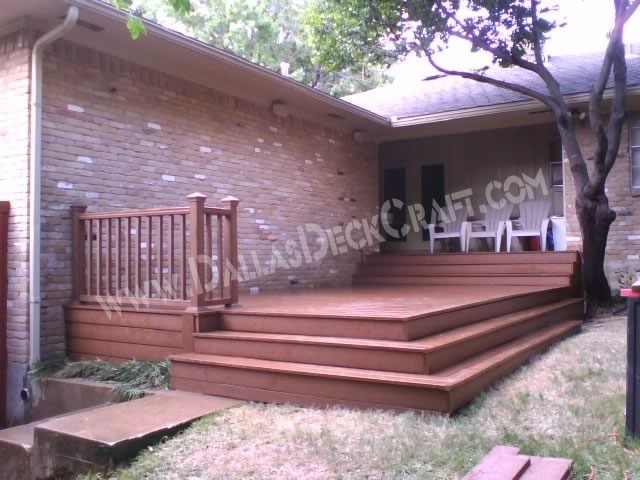- You are here:
- Home »
- Blog »
- Composite Decks »
- A Brief Overview of the Benefits of Composite Decking

A Brief Overview of the Benefits of Composite Decking
In the past decade or so, advancements have significantly improved the quality of composite decking, yielding a material that is stronger, longer-lasting, and less prone to warping, deterioration, and other common problems associated with outdoor wooden construction.
How is Composite Decking Made?
Composite decking is generally made from the combination of wood and plastic (hence composite). The wood is usually sourced from lumber byproducts such as wood chips, fibers, and sawdust. The plastics used are often recycled polyethylenes (but not always—you’ll have to confirm with the product manufacturer).
Producers of composite decking take the wood and the plastic products and heat them up, at which point coloring and a preservative agent are added to the “wood soup.” Finally, the mixture is poured into casts to form boards. Once it hardens, the composite decking is ready to be shipped to your local supplier.
The Best Uses for Composite Decking
Composite decking has become a popular choice for outdoor decks as a result of its durability and resistance to weathering. Composite woods are also more resistant to moisture, making them a great choice for humid areas or as decking for above ground pools.
There are two kinds of composite decking: hollow and solid. Hollow decking isn’t as popular as solid decking, as it tends to look less realistic and isn’t as sturdy as its counterpart, but it does carry the benefit of being less prone to temperature and moisture related expansion and contraction.
Solid composite decking can contract and expand more, but is generally more durable and strong. Which type you choose is largely dependent upon the intended use of the deck and the temperature conditions where you live.
The aesthetic appeal of composite wood has also substantially improved over the years—while a trained eye might still be able to spot it, as it’s not a perfect 1:1 replica of “real” wood, composite wood can often look very natural and pleasing.
A wide variety of grains, colors, and other options are available to homeowners—matching composite wood to the already-existing wood in your home is generally a fairly easy process.
Most composite decking comes with a fairly long warranty—as this material is designed to last quite a long time—but homeowners should be aware that in order to take advantage of the warranty, the deck has to be built according to the manufacturers directions.
Hiring a professional deck builder ensures that your warranty will be valid for years to come.
Composite wood can also be used for parts of your outdoor deck other than the deck itself; for example, suppose you had your deck built out of Trex composite decking. Trex also makes railing out of composite wood, meaning that your entire project can remain uniform.
As a final note, composite decking does require maintenance, though this maintenance is generally considered a bit less intensive than natural wood requires. Typically, composite decking must be cleaned at least once per year.
Composite Decking Prices
In addition to its improvements over the past few years, the cost of composite decking has also become much more affordable.
However, a common misconception is that composite decking is significantly cheaper than “real” wood—while this can be true, it isn’t always the case. Just like natural woods, the price of composite decking will vary based on quality and type.
Whether you decide to build your deck using composite decking or natural wood decking, you can expect to find prices similar to each other which offer different benefits—therefore, the smart move will be to base your purchase on the intended use of the deck (e.g., an above ground pool deck may benefit from composite wood’s resistance to moisture).
